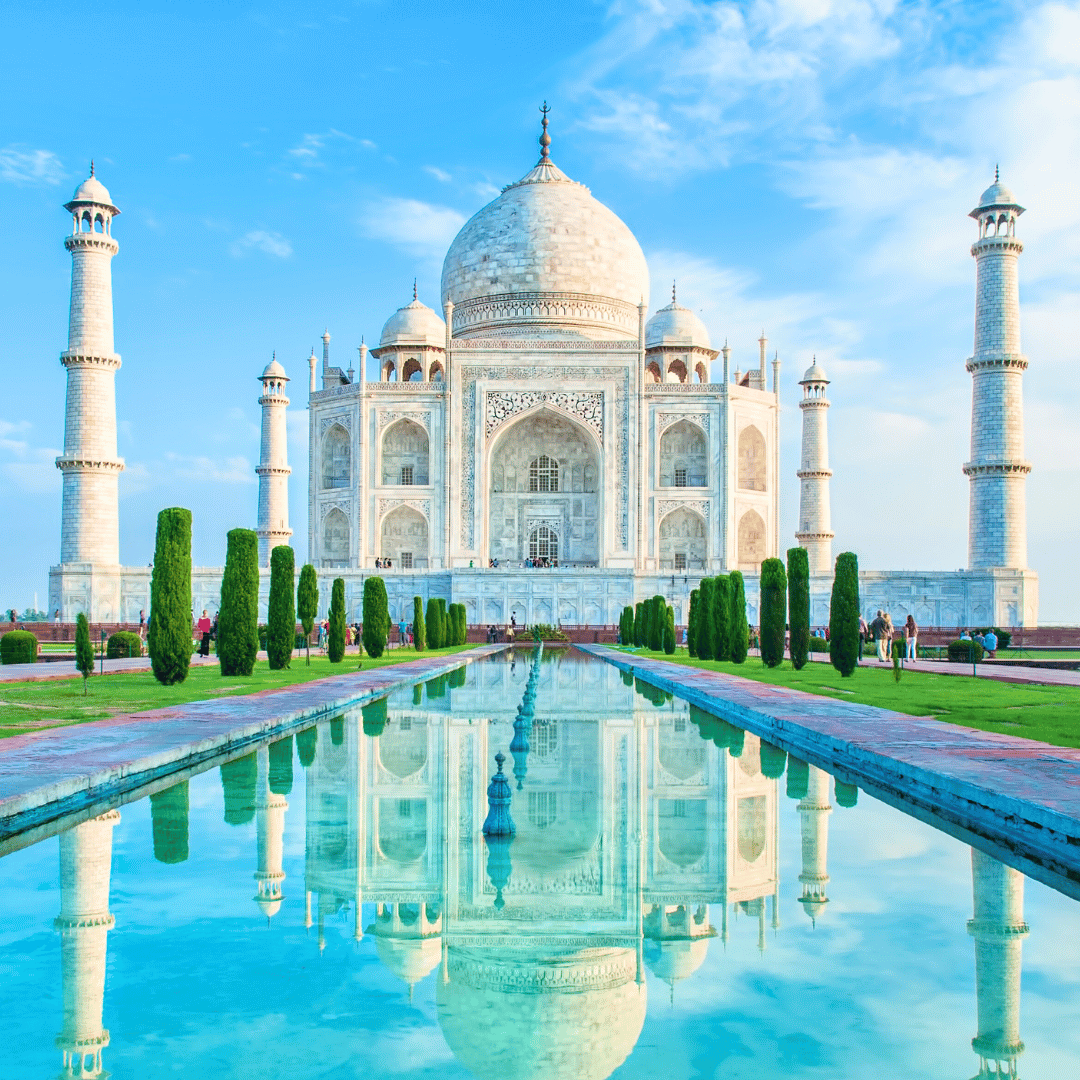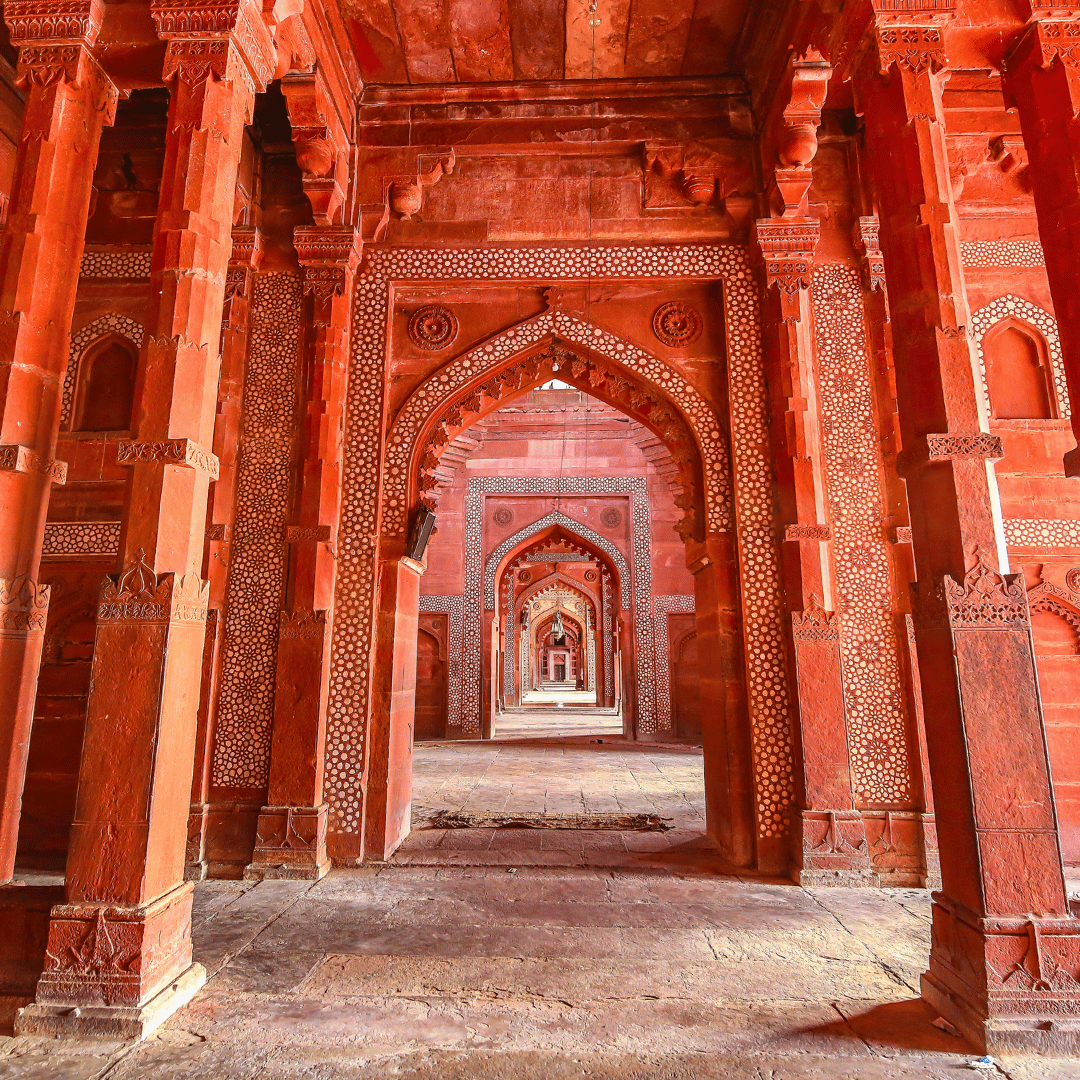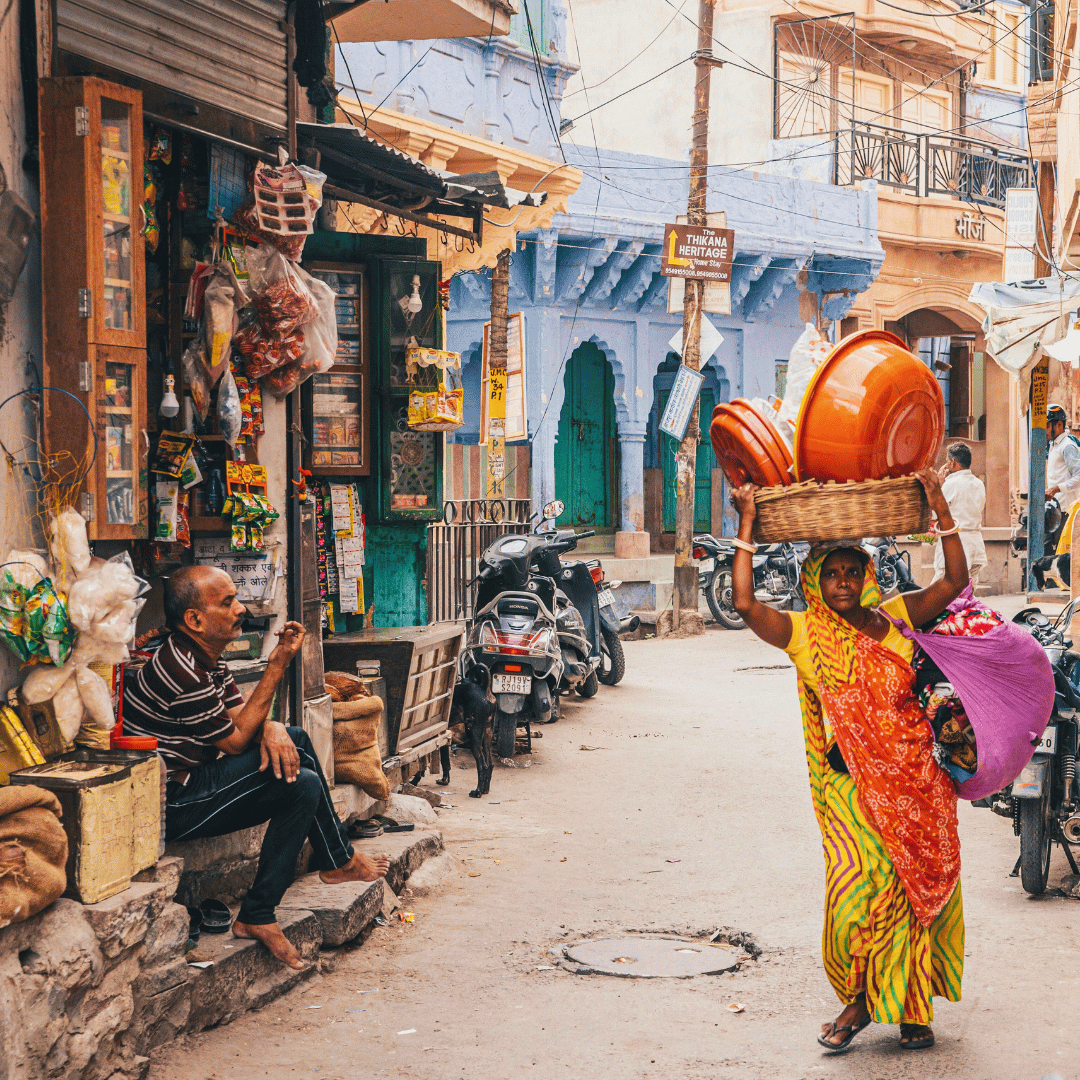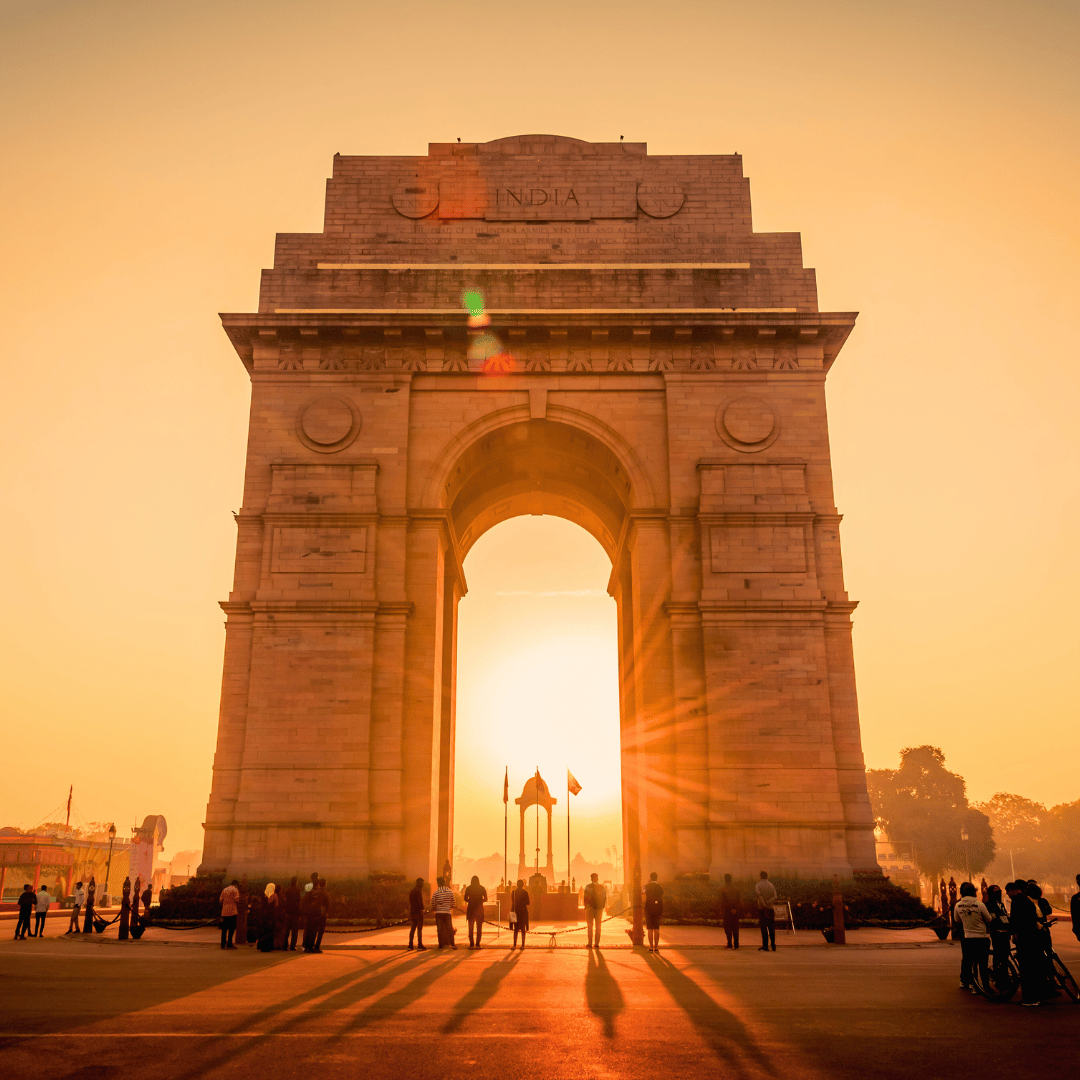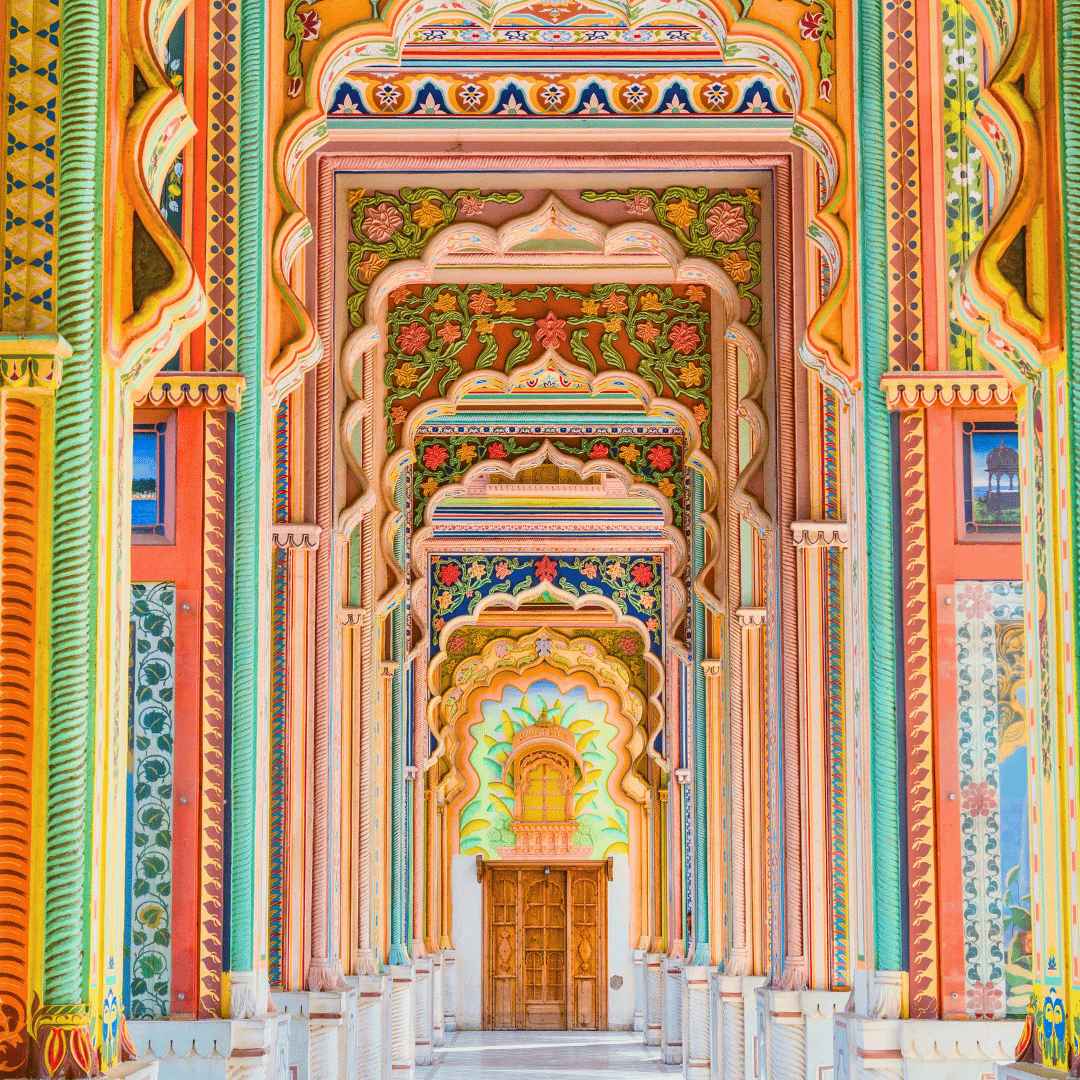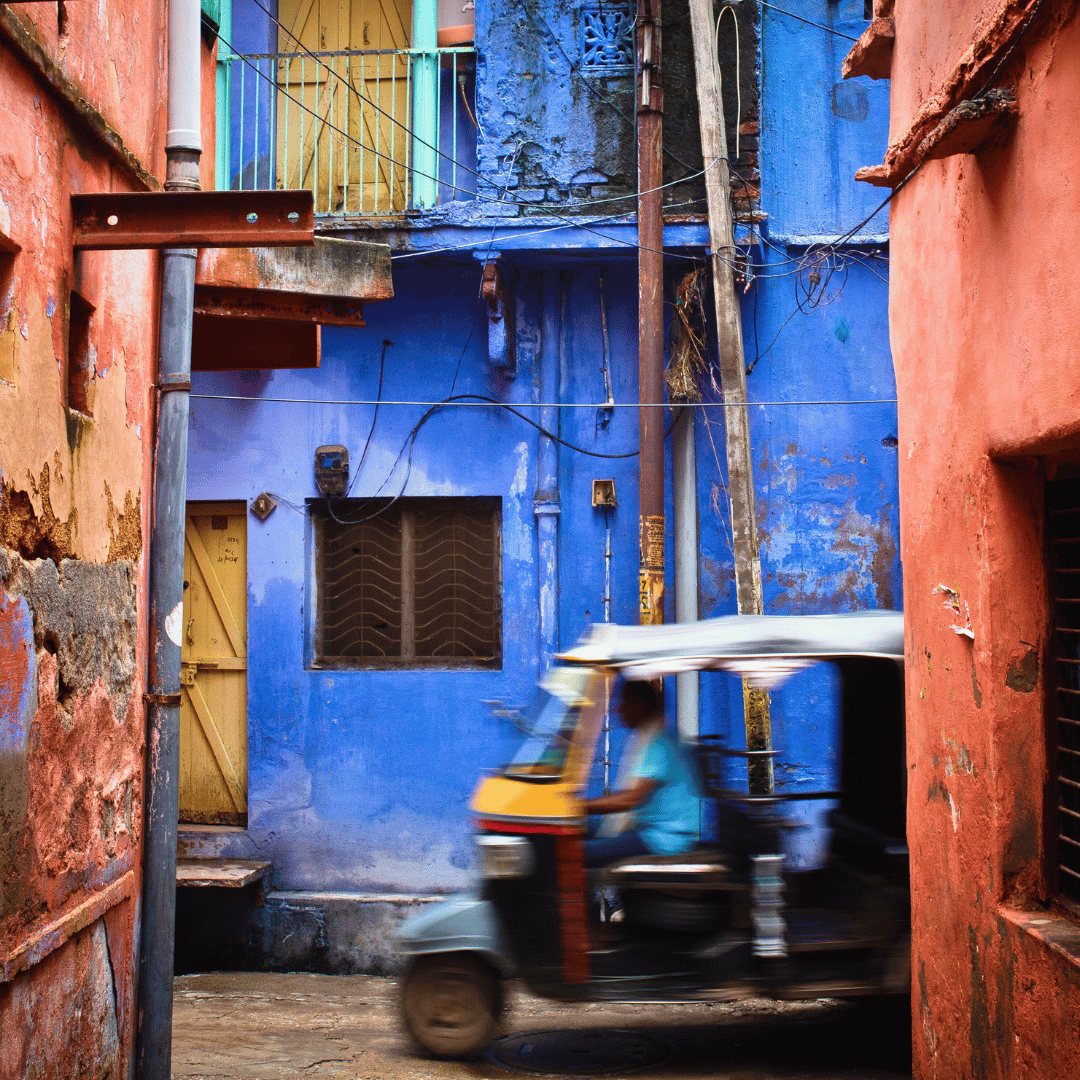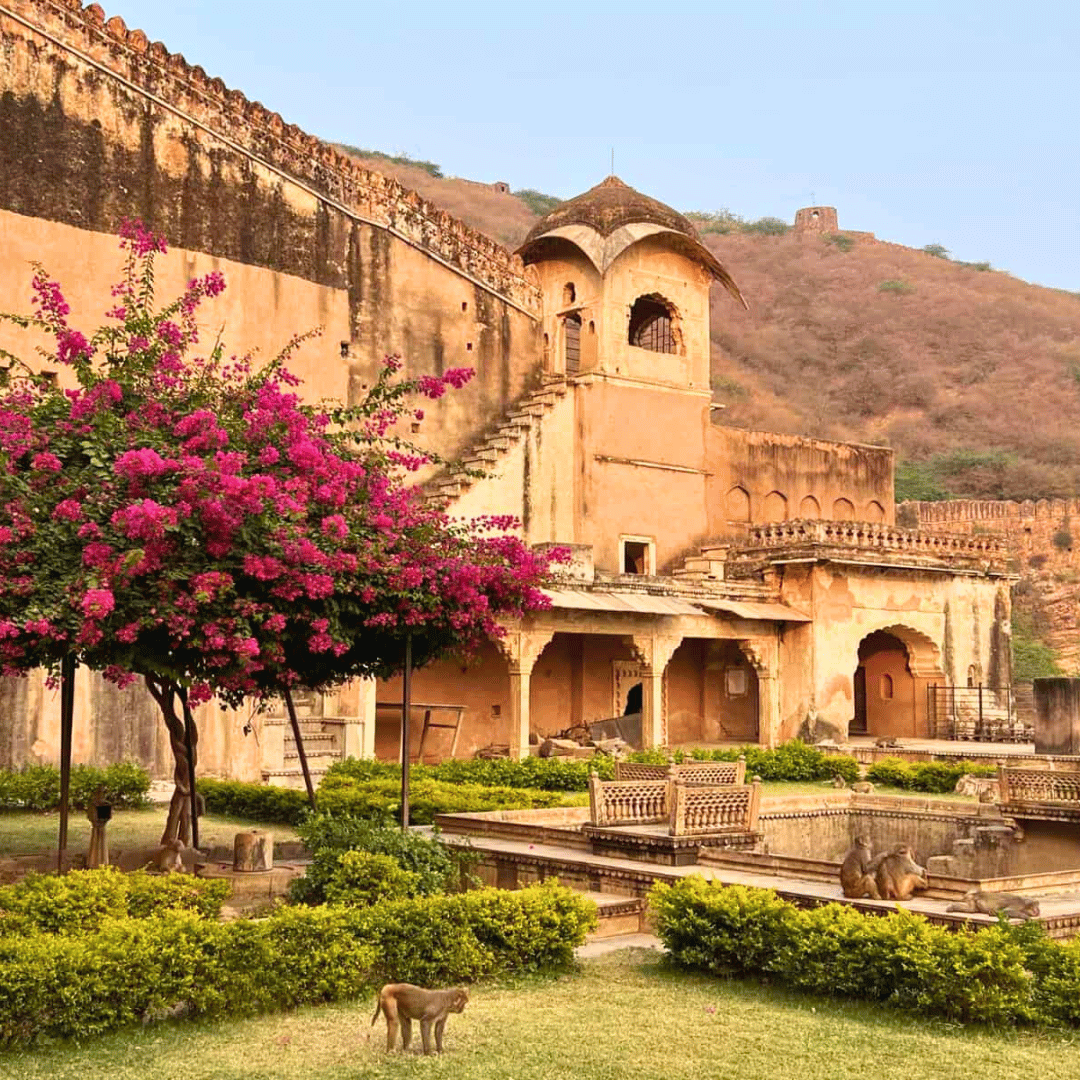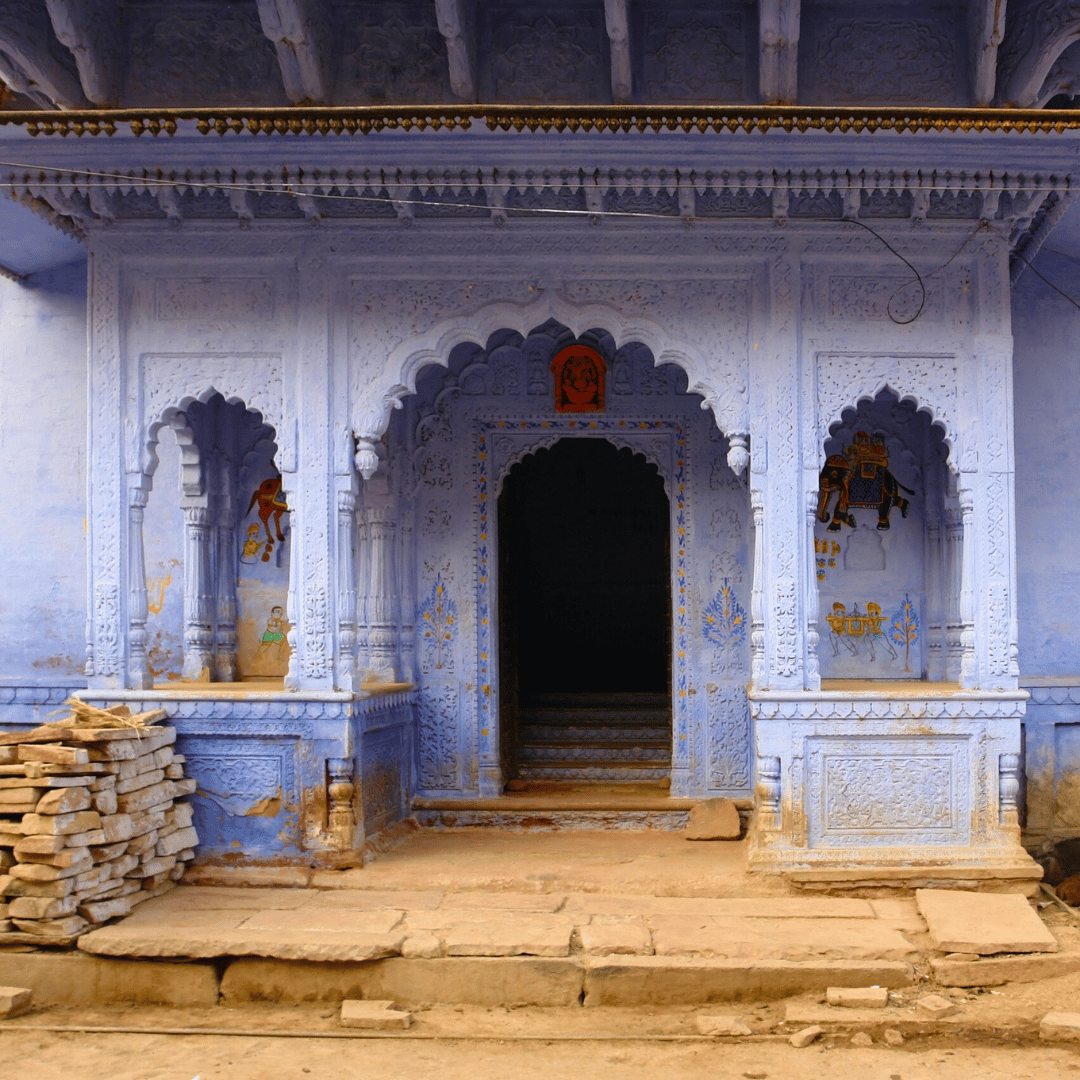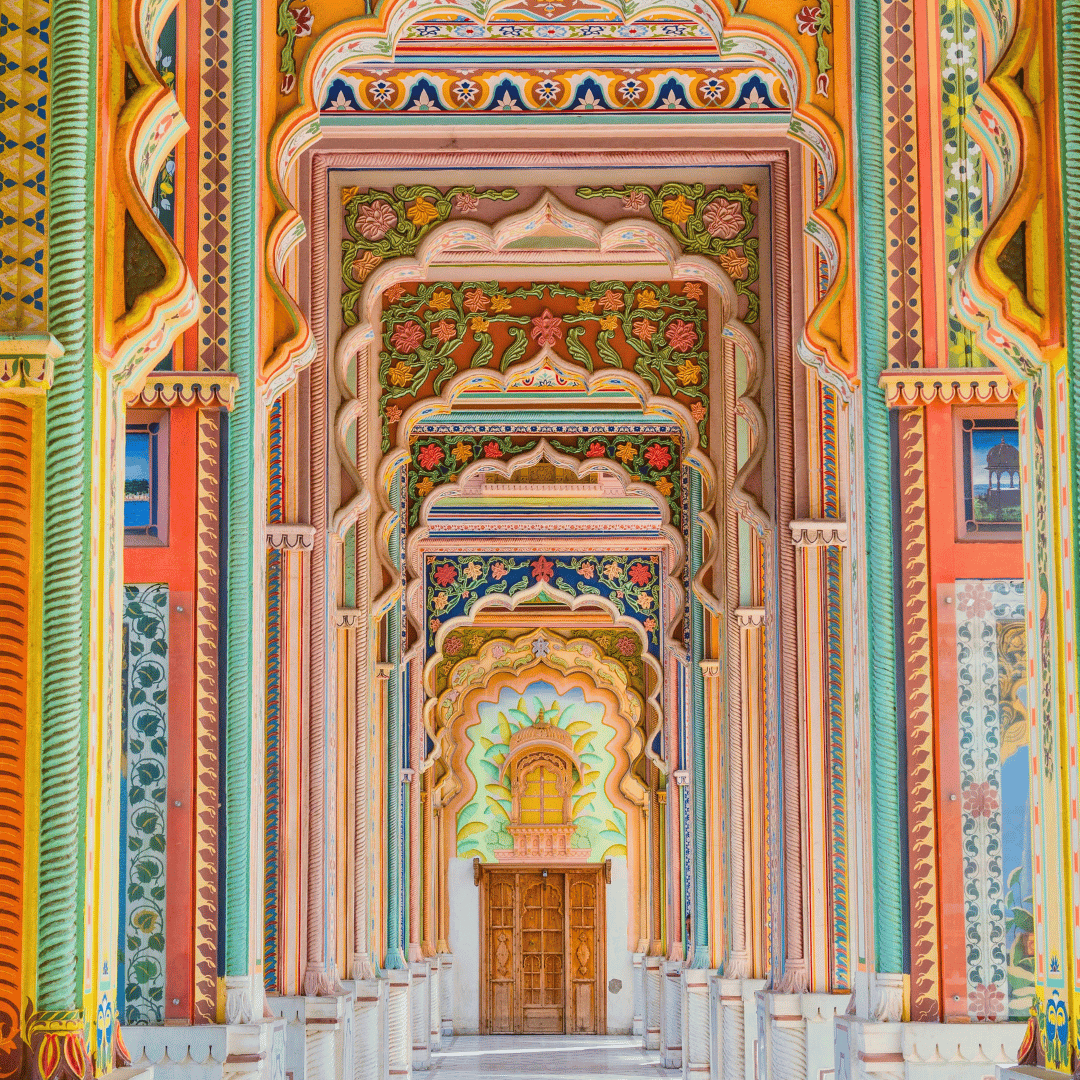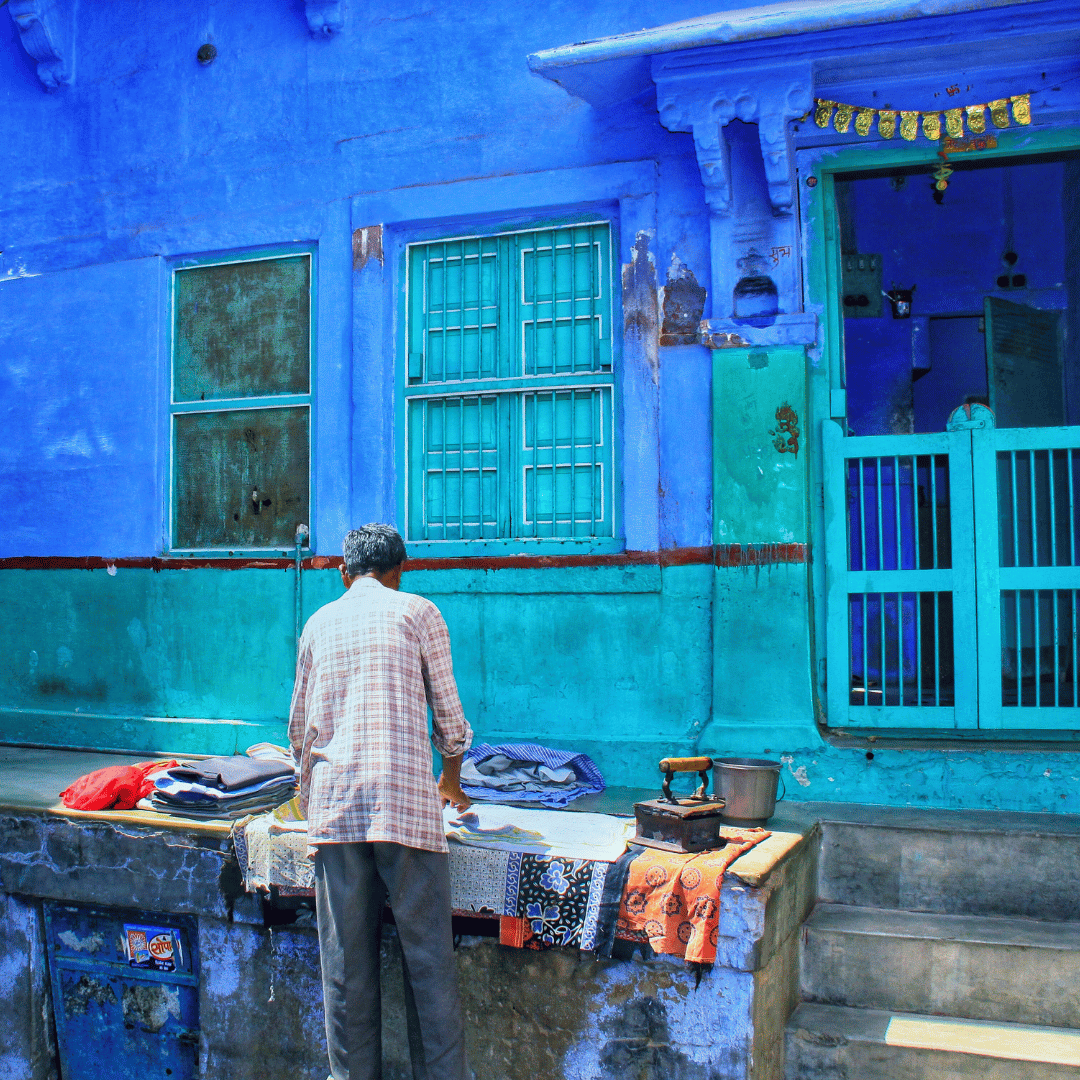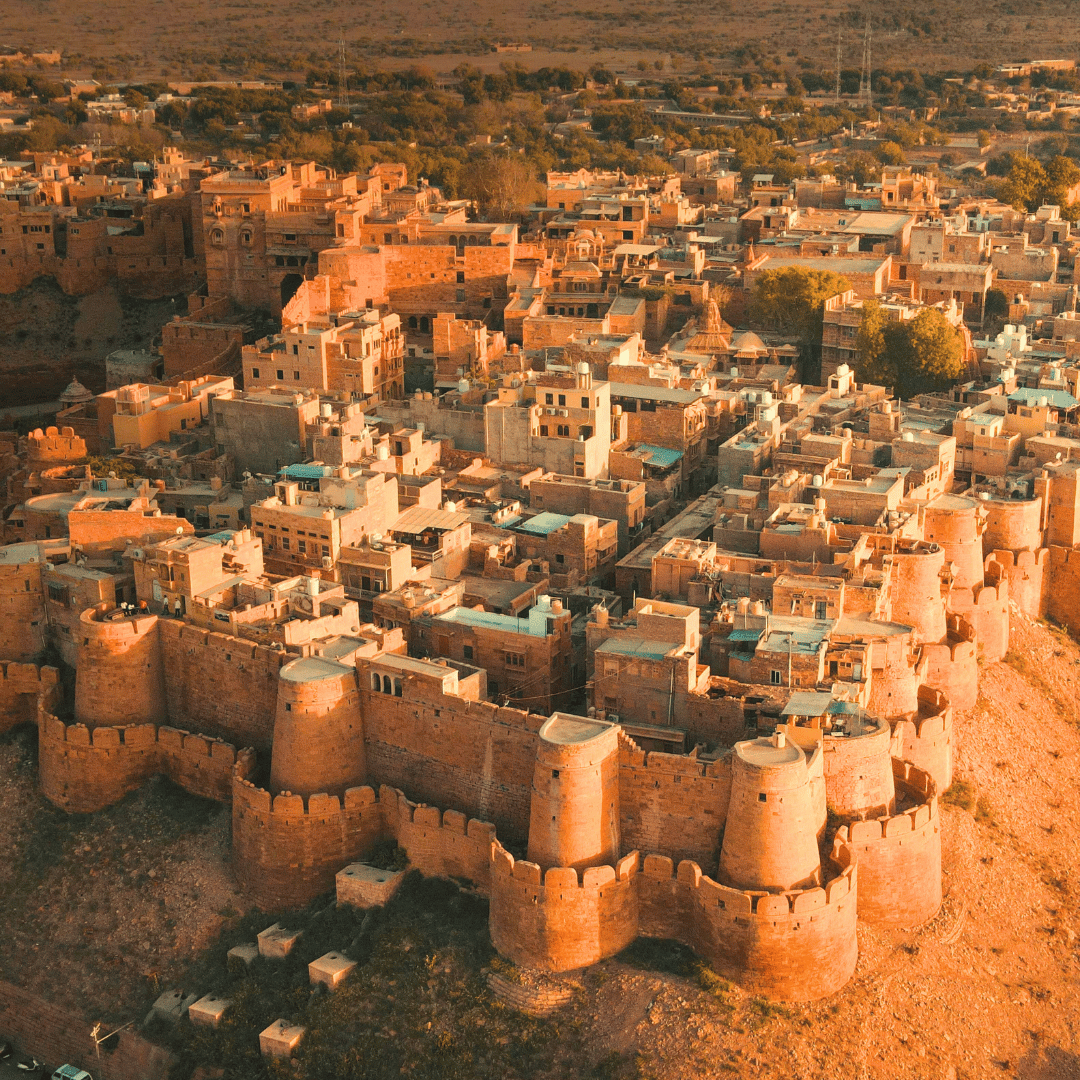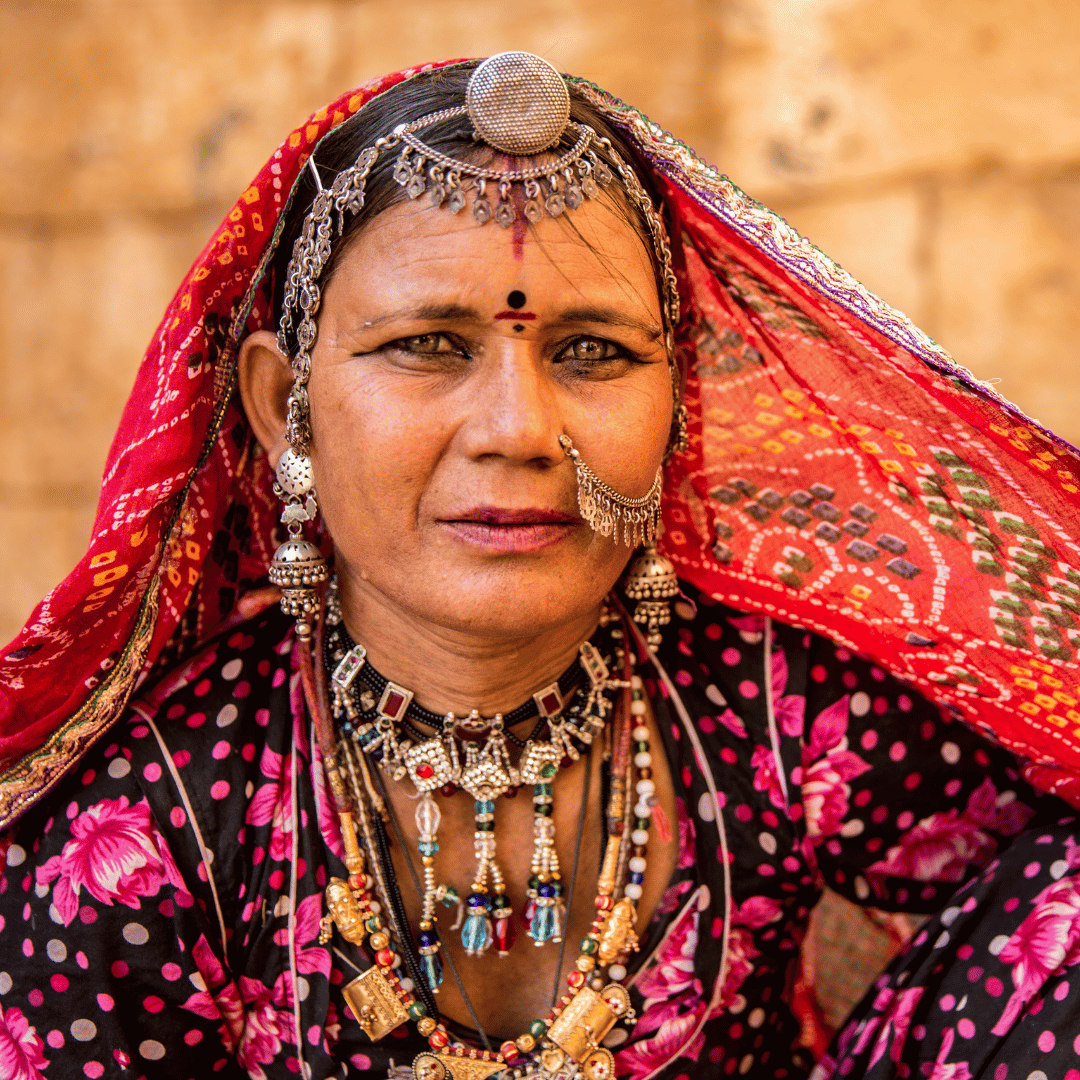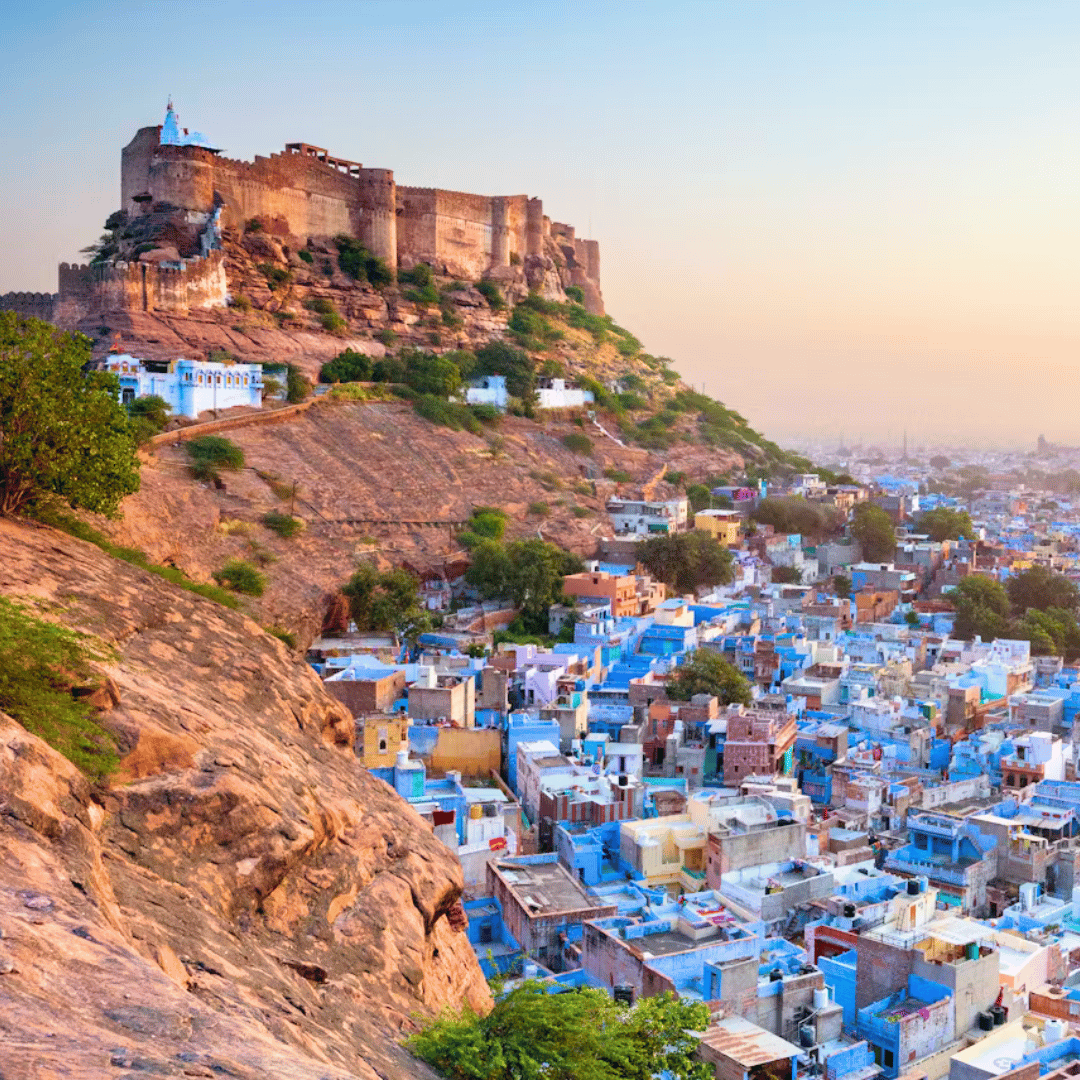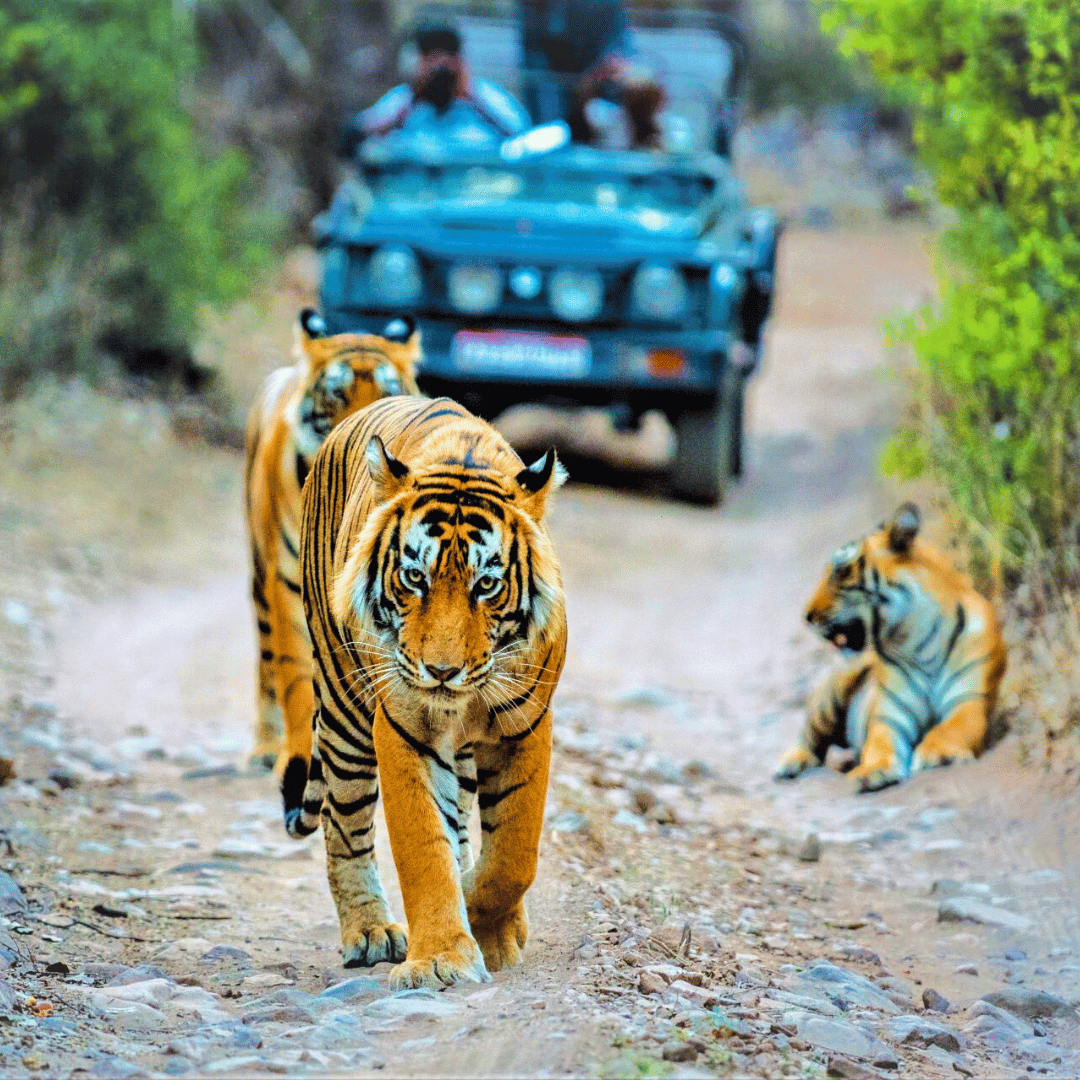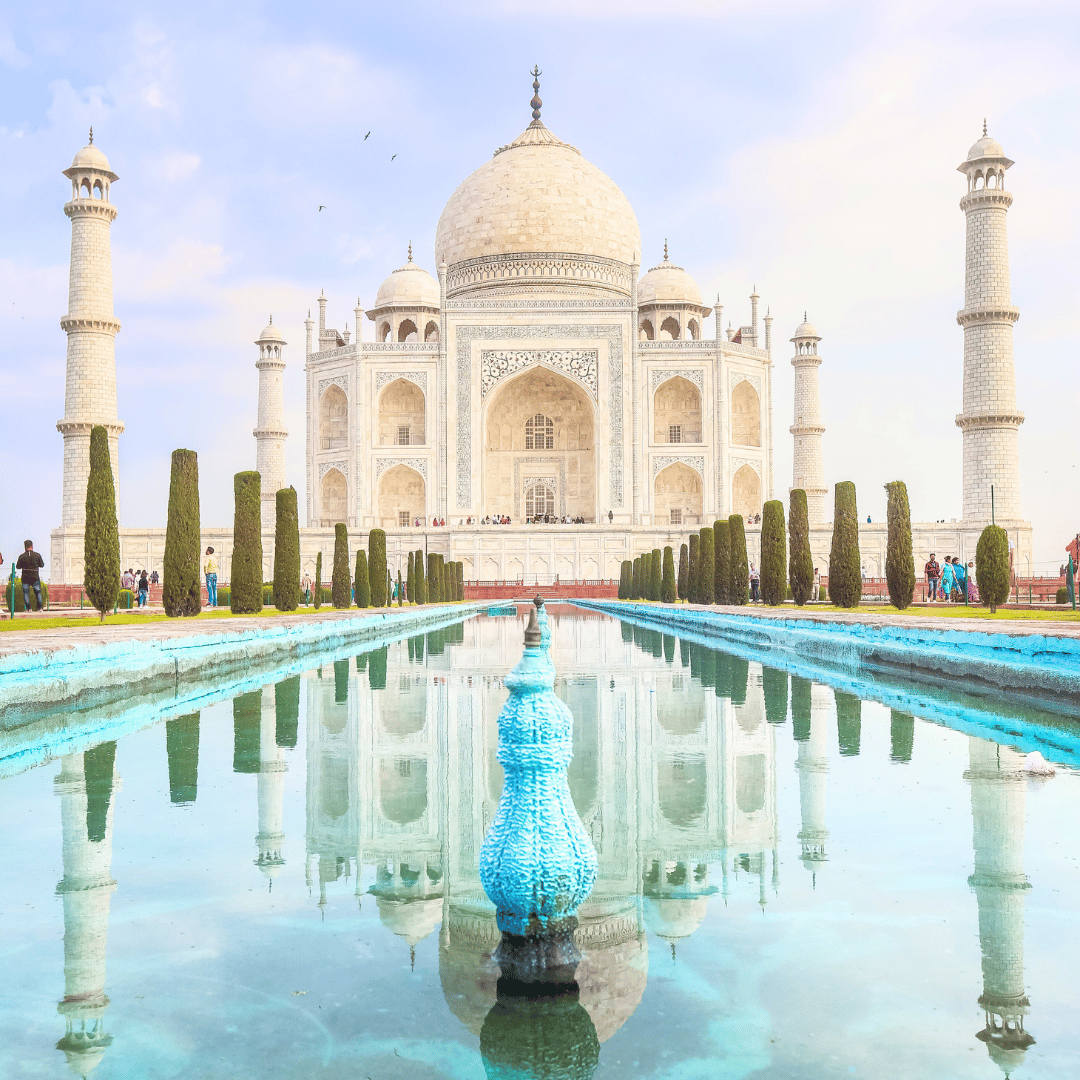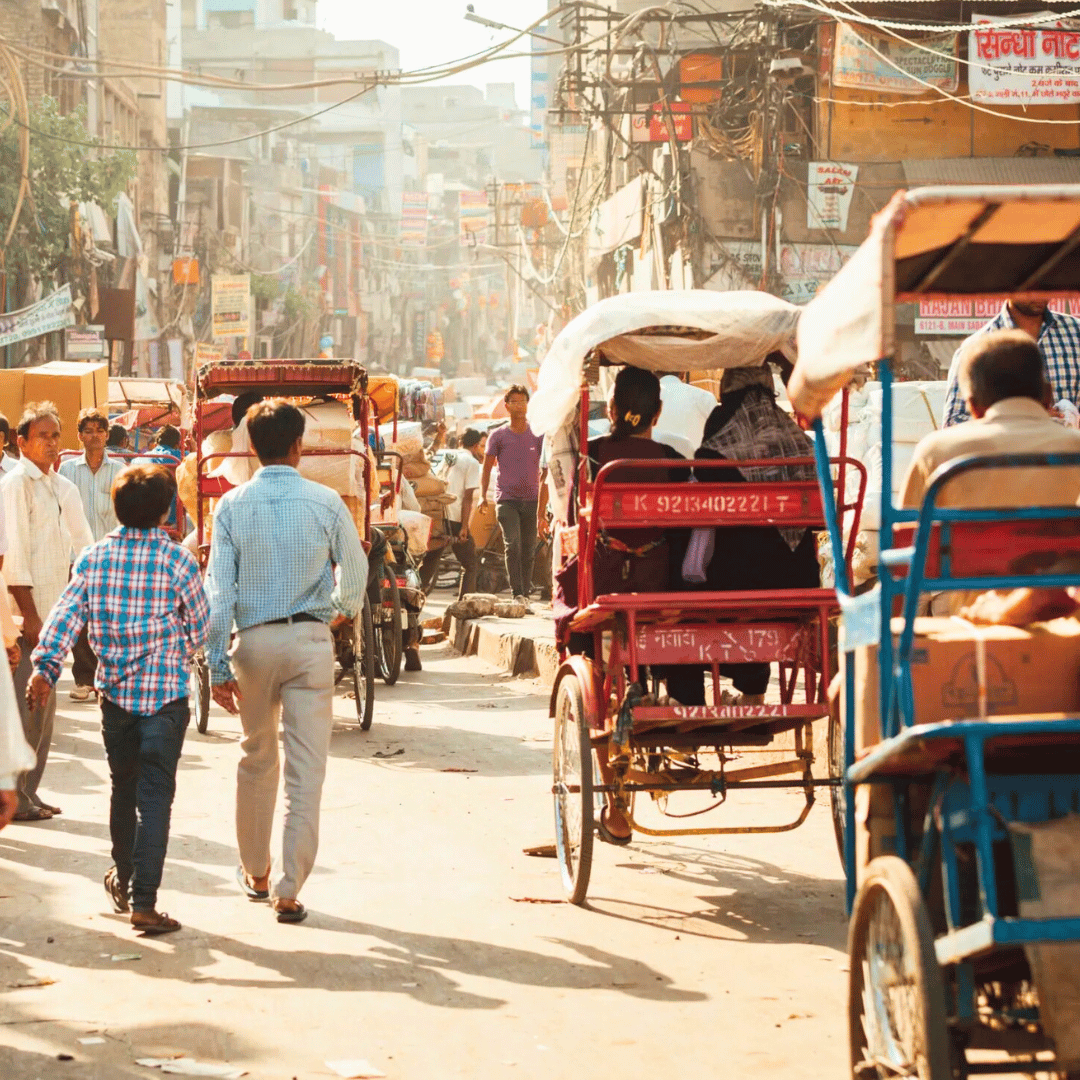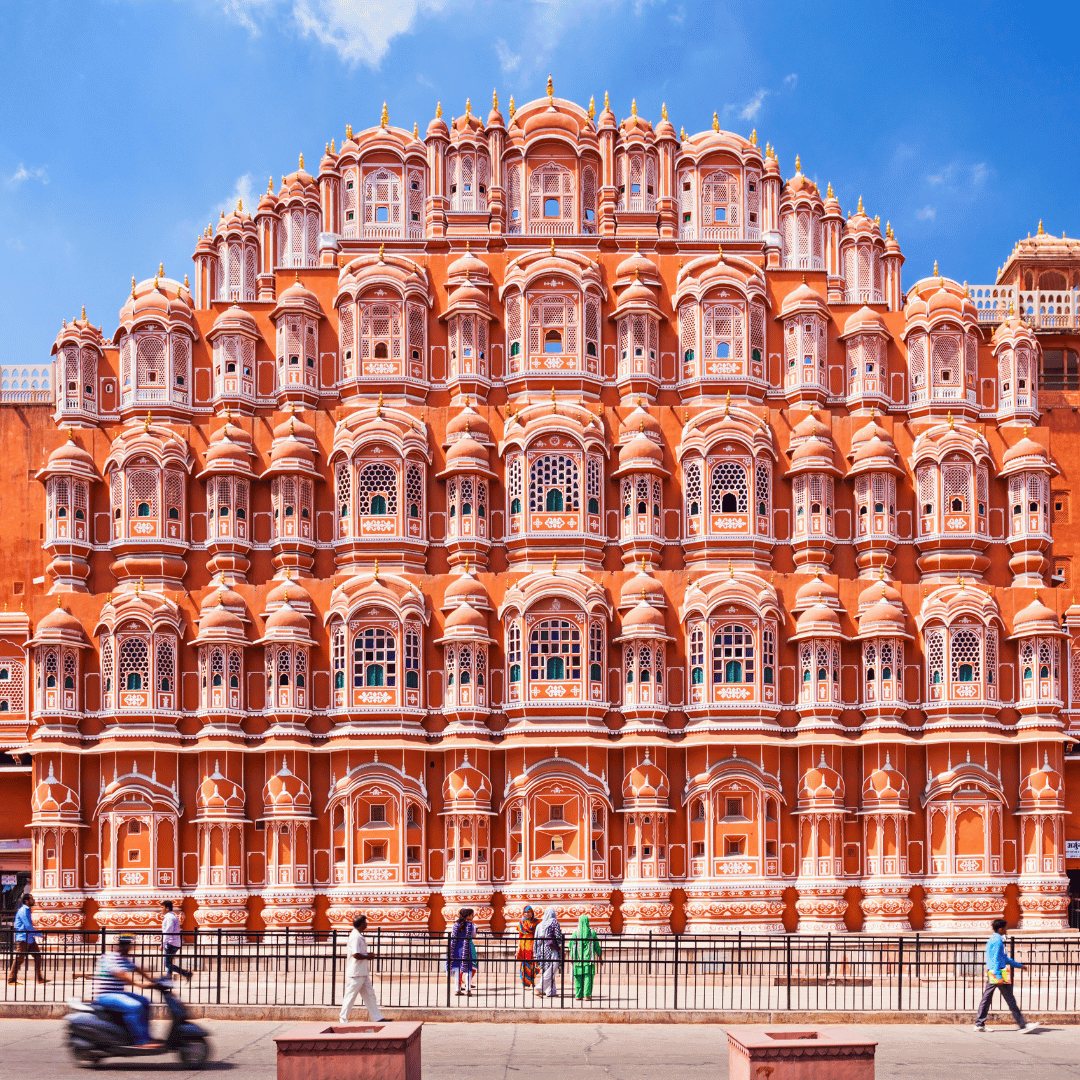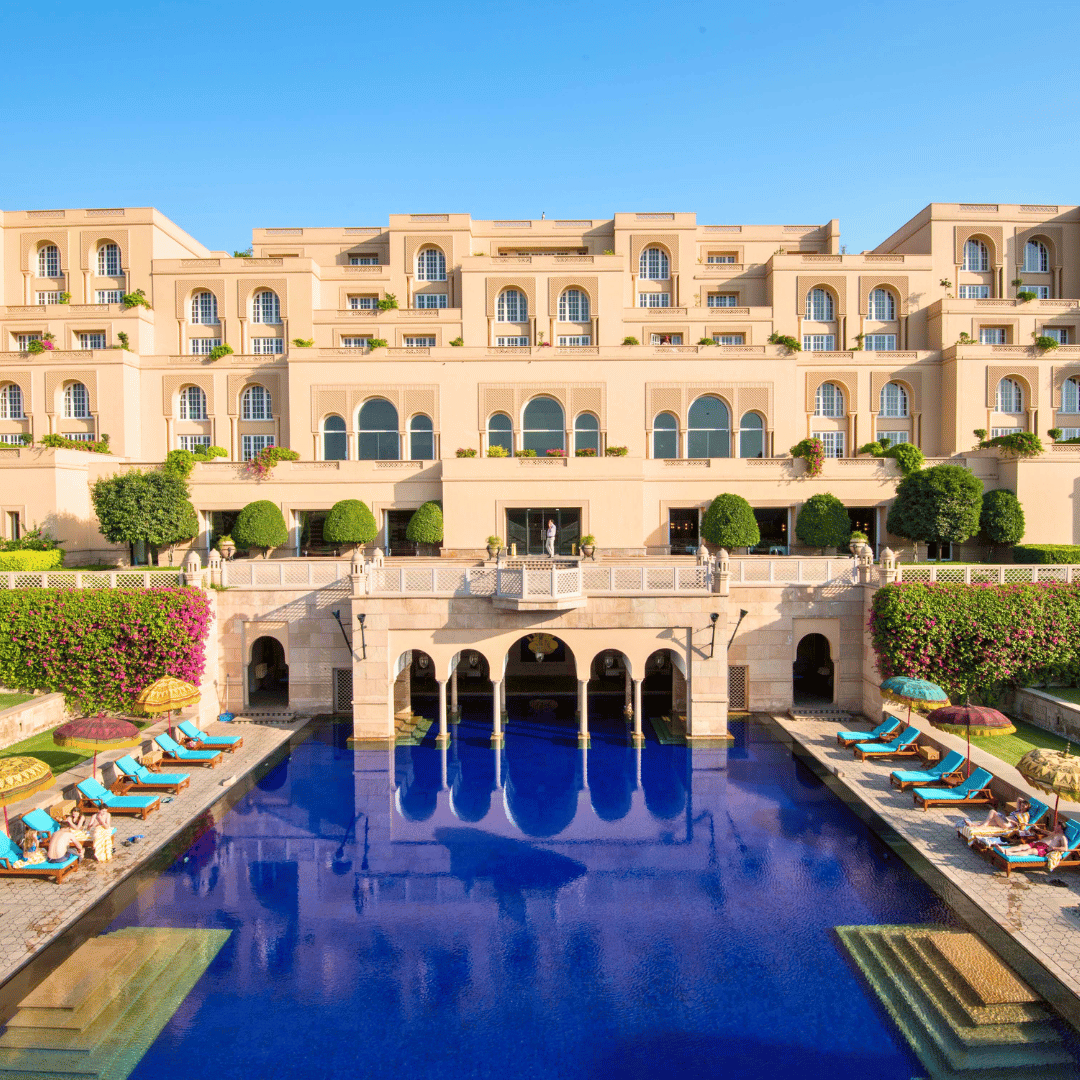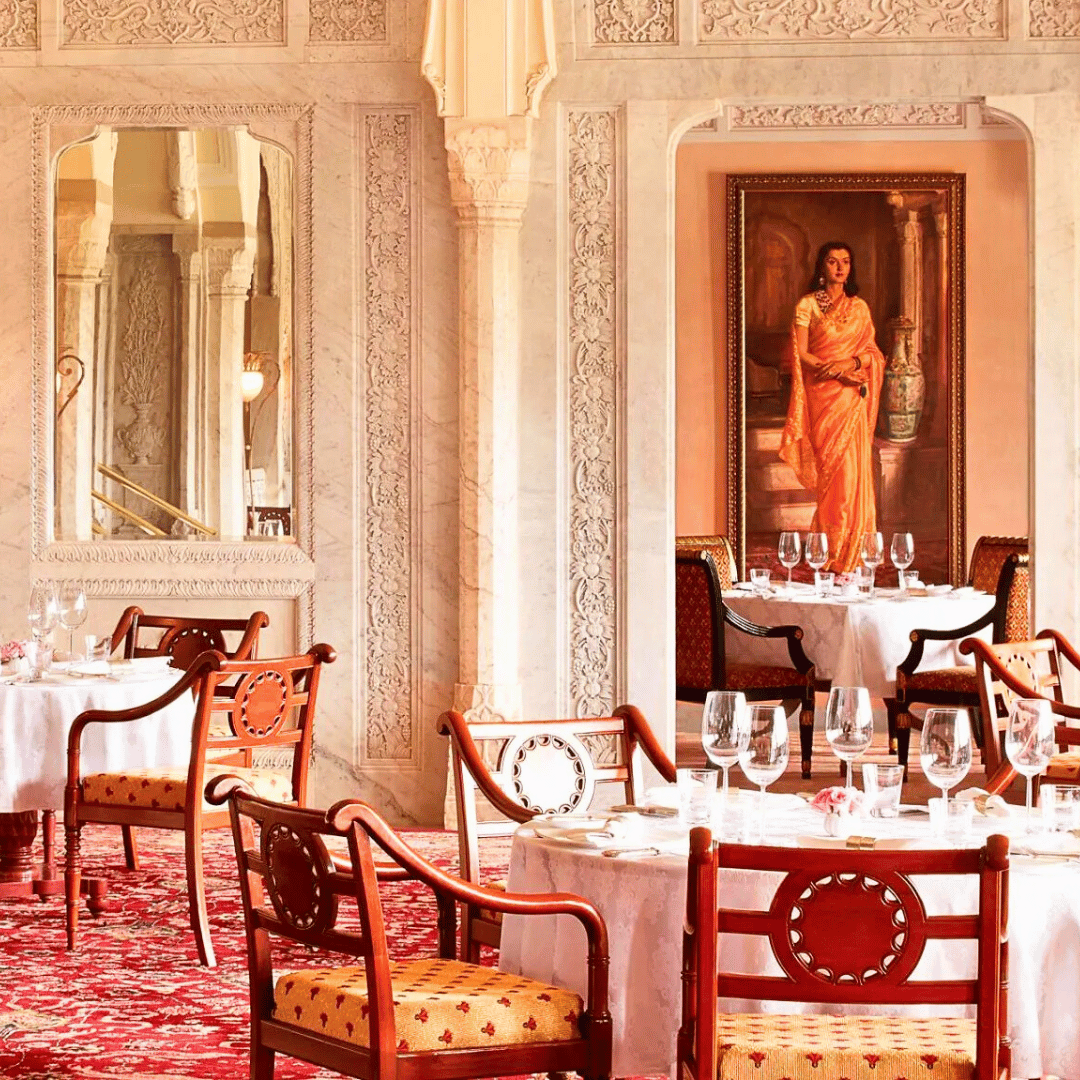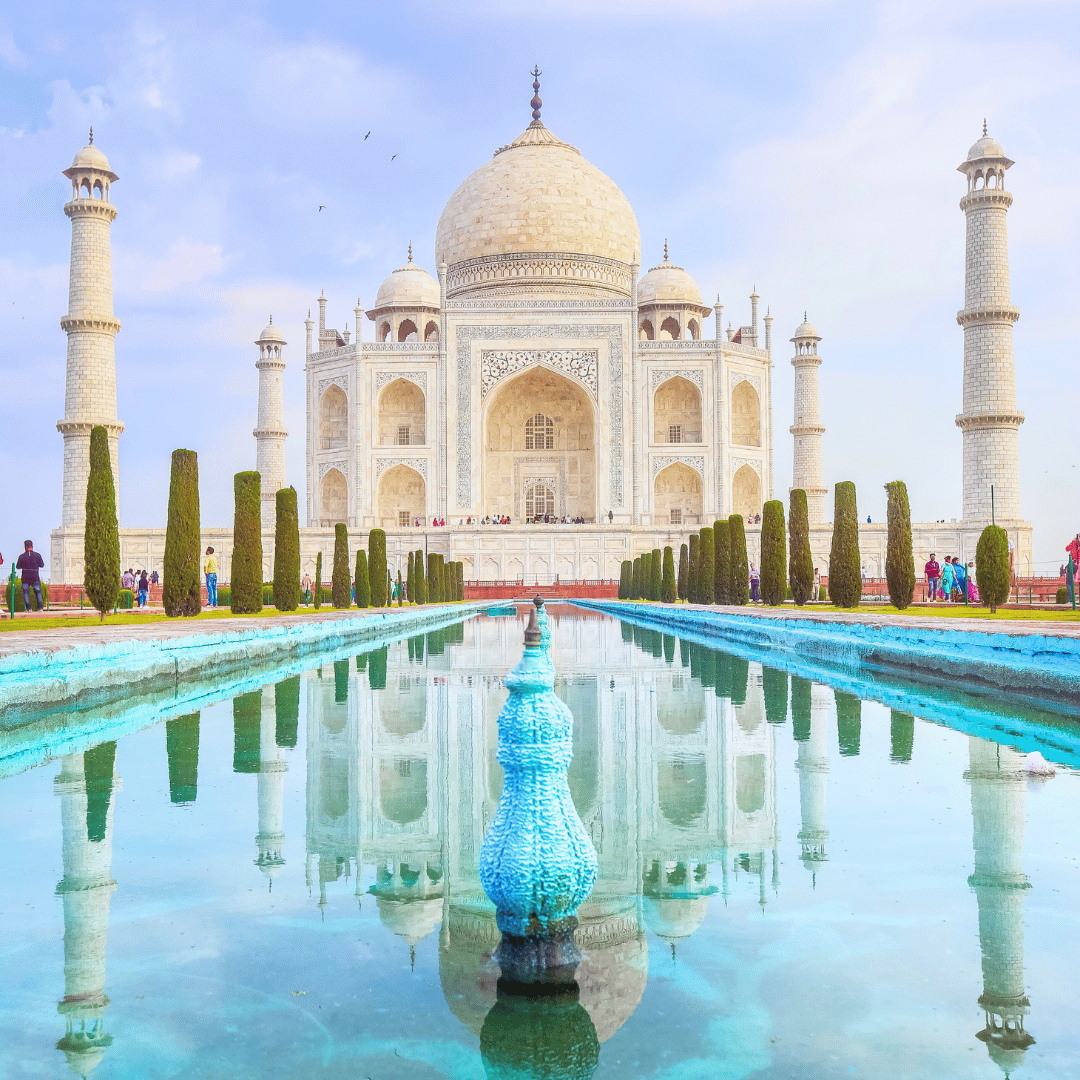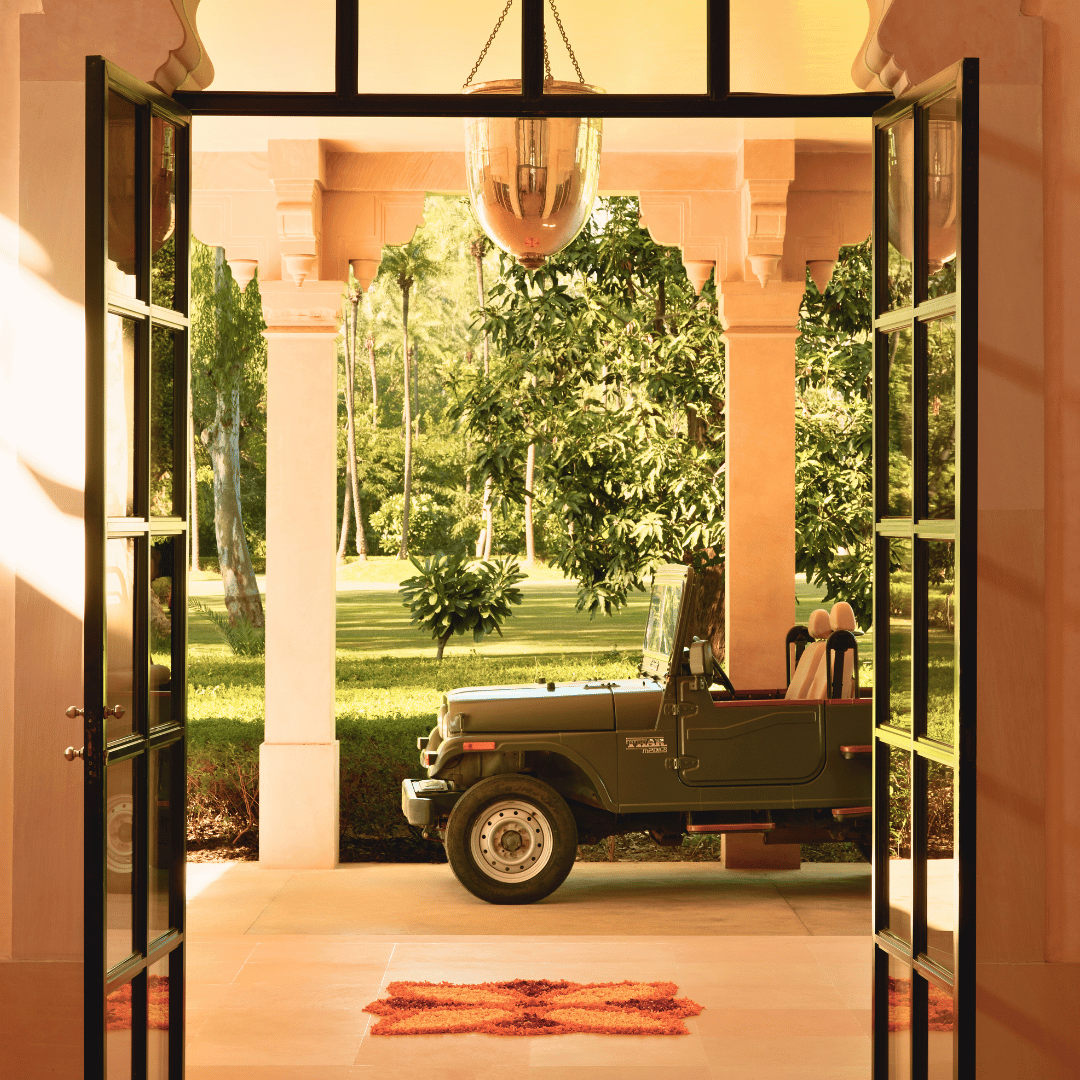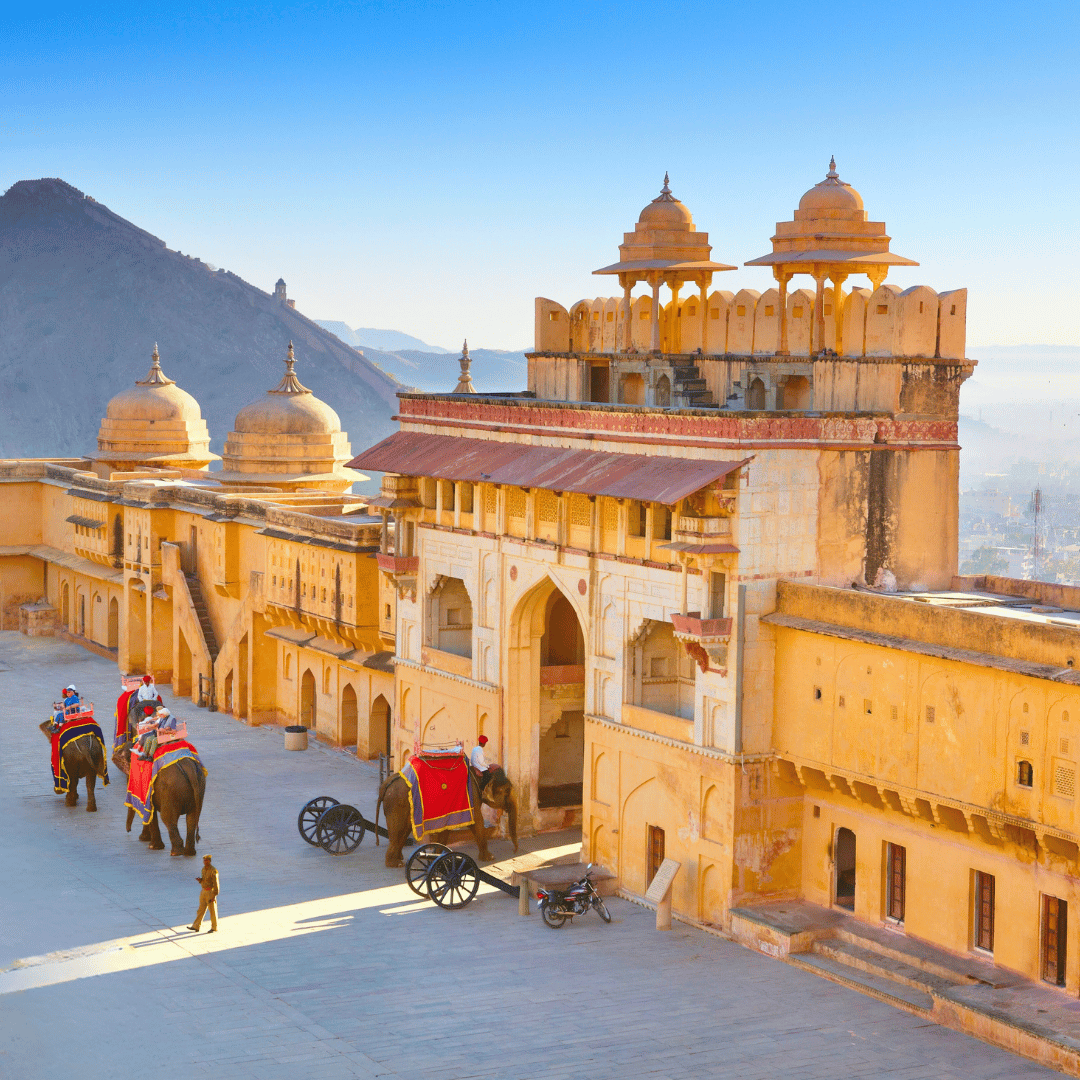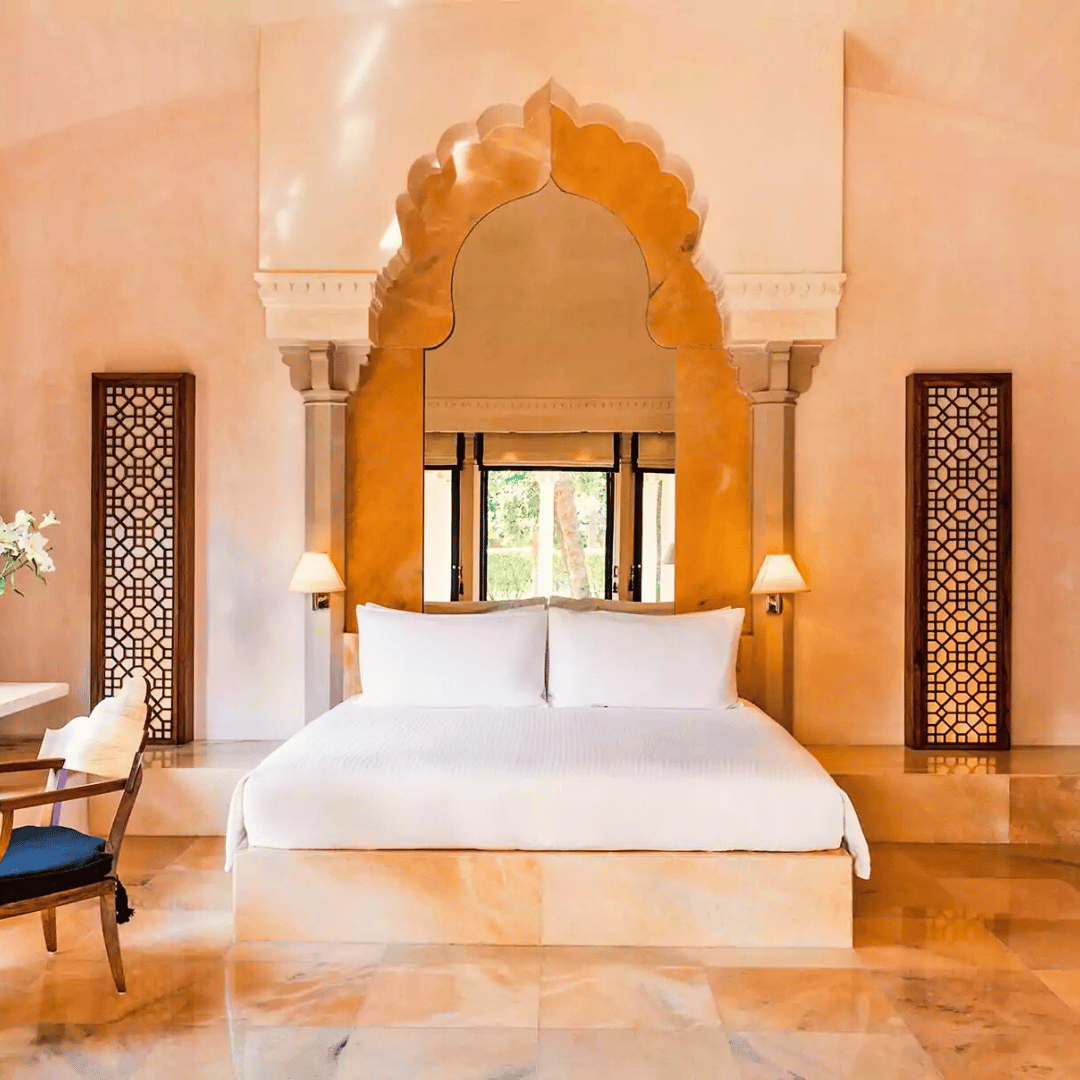Highlights of Golden Triangle Itinerary
-
Welcome to India! On arrival in Delhi, you’ll be met by a local representative and transferred to your hotel for check-in. As India’s capital and one of its largest cities, Delhi is home to more than 16 million people - and at times it can feel like half of them are on the move all at once.
Fundamentally, Delhi is a city of contrasts and energy, where the old and the new exist side by side. From Mughal forts and colonial architecture to sleek shopping centres and metro stations, Delhi offers a complex and fascinating introduction to the country. Packed with museums, art galleries, historic monuments, temples, bustling markets and street food stalls, it’s a place that defies easy description. With its layers of history and vibrant street life, Delhi rewards both curiosity and patience - and it would take more than a lifetime to uncover all that this remarkable city has to offer.
-
Today, set out on a full day of sightseeing in Delhi with a knowledgeable local guide, who will help bring the city’s rich history and vibrant culture to life.
Begin in Old Delhi, where narrow laneways, ancient monuments and the hum of daily commerce combine to create an unforgettable atmosphere. Visit Jama Masjid, the largest mosque in India, built in the 17th century by Mughal emperor Shah Jahan. Climb the steps for a panoramic view of the surrounding rooftops, or simply take in the impressive scale of its vast courtyard and red sandstone architecture. From here, hop aboard a cycle-rickshaw and wind your way through the lively lanes and crowded bazaars, passing spice shops, fabric stalls and food vendors, until you reach Chandni Chowk - one of the oldest and busiest markets in Delhi. This chaotic but colourful stretch has been a centre of trade for centuries, and offers a fascinating glimpse into daily life in the old city. You'll also visit Raj Ghat, a peaceful riverside park where a simple black marble platform marks the cremation site of Mahatma Gandhi - a quiet and moving tribute to the father of modern India.
After lunch, shift to the broader avenues and planned layout of New Delhi. Designed by British architect Edwin Lutyens in the early 20th century, this part of the city contrasts sharply with Old Delhi’s tight-knit chaos. Drive past the stately government buildings, the Parliament House, and the imposing Rashtrapati Bhavan - the Presidential Palace - all set among wide boulevards and manicured lawns.
You’ll also visit the striking Lotus Temple, built by the Bahá'í community and known for its distinctive petal-shaped design and serene atmosphere. End the day at Qutub Minar, a towering 12th-century minaret that soars over 70 metres high and is part of a larger archaeological complex. Adorned with intricate carvings and Quranic inscriptions, it is a remarkable example of early Indo-Islamic architecture and a fitting conclusion to your day exploring Delhi.
-
This morning, depart Delhi for the drive to Agra, a journey of around five hours through the open plains of northern India. As you leave the capital behind, the scenery gradually shifts to a more rural landscape, offering glimpses of village life, farmland and quiet roadside towns along the way.
Agra, once a small settlement, was transformed into a grand imperial city in the 16th and 17th centuries by two of the most influential Mughal emperors, Akbar and his grandson Shah Jahan. Under their rule, Agra became a centre of political power, culture and architecture. It was Shah Jahan who commissioned the Taj Mahal, one of the world’s most celebrated monuments, as a tomb for his wife Mumtaz Mahal. The structure remains a symbol of love and artistic achievement, admired for its symmetry, marble craftsmanship and peaceful setting by the Yamuna River.
In the late afternoon, visit Agra Fort, an architectural wonder in its own right and another UNESCO World Heritage site. Built by Emperor Akbar and later developed by his successors, the fort is a vast complex of palaces, halls, courtyards and gardens, enclosed within towering red sandstone walls. Highlights include the elegant Khas Mahal, the Diwan-i-Am or Hall of Public Audience, and the Jahangiri Mahal. From parts of the fort, you can enjoy a distant view of the Taj Mahal, a quiet reminder of Agra’s lasting legacy as a seat of Mughal splendour.
-
Wake early this morning for a truly unforgettable experience - a visit to the Taj Mahal at sunrise. As the first light of day bathes the white marble in soft hues of pink and gold, the monument reveals its quiet beauty in a way that few moments can match. With fewer visitors and a stillness in the air, it’s a chance to appreciate the elegance and symmetry of this iconic structure in the peaceful hours of early morning. Accompanied by an expert local guide, you’ll learn about the fascinating history of the Taj, the Mughal emperor Shah Jahan’s devotion to his wife Mumtaz Mahal, and the remarkable craftsmanship that went into creating what is often called the world’s most beautiful building.
After your visit, return to the hotel for breakfast and a chance to freshen up before setting off on the next leg of your journey - a five-hour drive to Jaipur, the capital of Rajasthan. Along the way, you’ll stop at Fatehpur Sikri, a remarkable but short-lived Mughal capital built by Emperor Akbar in the late 16th century. Once a grand imperial city, it was mysteriously abandoned just a few years after its construction, likely due to water shortages. Today, its well-preserved palaces, courtyards and mosques stand silent among red sandstone walls, offering a glimpse into a moment of history frozen in time.
Continue on to Jaipur, often called the ‘Pink City’ for the distinctive rose-coloured stone used in many of its historic buildings. Lively and welcoming, Jaipur is a place where the past and present sit comfortably side by side. Its streets are filled with colourful bazaars selling textiles, jewellery, pottery and traditional Rajasthani crafts, while grand palaces and forts rise above the city skyline. On arrival, check in to your hotel and enjoy the remainder of the afternoon at leisure. You may wish to take a short walk through the local markets or simply relax and prepare for a full day of exploration tomorrow.
-
Today is dedicated to discovering the many sights of Jaipur, with a local guide on hand to share stories, history and insight into the city’s rich heritage. Begin with a visit to Amber Fort, located just outside the city in the Aravalli Hills. This sprawling fortress, built in the 16th century by Raja Man Singh, is a striking example of Rajput architecture, combining ornate palaces, mirror-worked halls, courtyards and sweeping views over the surrounding countryside. Reach the fort by jeep or on foot and explore its labyrinth of passageways, pavilions and gardens.
Back in the city, stop for a photo opportunity at Hawa Mahal, the ‘Palace of Winds’. This iconic pink sandstone façade, with its intricate latticework and small windows, was designed to allow royal women to observe street life and festivals without being seen. Continue to the City Palace, still home to the former royal family, where you’ll visit elegant courtyards, richly decorated halls and museums displaying royal costumes, weapons and artwork. Nearby is Jantar Mantar, an extraordinary 18th-century observatory built by Maharaja Jai Singh II. It houses a collection of large-scale astronomical instruments used to measure time and track celestial movements with impressive precision.
In the afternoon, you have some time to explore at your own pace. For a unique cultural experience, you might opt to visit the famous Raj Mandir cinema - an art deco-style theatre known for its grand interiors and enthusiastic crowds. Watching a Bollywood film here, with locals cheering and laughing along, is a fun and immersive way to get a taste of Indian popular culture.
Alternatively, head to the bustling bazaars of Jaipur, where streets are lined with stalls and shops selling everything from block-printed textiles and embroidered garments to jewellery, spices and handcrafted souvenirs. Johari Bazaar is known for gems and jewellery, while Bapu Bazaar is a good spot for textiles and leather goods. Bargaining is expected - and part of the fun - so don’t be shy about joining in the exchange. Whether you’re shopping or simply soaking up the atmosphere, it’s a lively and colourful way to spend the afternoon.
-
Spend a relaxed morning at your own pace, with time for any last-minute shopping or packing. If there are a few final items to pick up or gifts to take home, Jaipur’s markets offer plenty of options - from handmade crafts and jewellery to colourful textiles and spices. Or simply enjoy a quiet coffee, take a final stroll through the hotel gardens, or reflect on your journey through North India so far.
In the afternoon, depart by road for the drive back to Delhi, a journey of around six hours. As you travel across the plains of Rajasthan into the heart of northern India, you’ll pass a changing landscape of farmland, small towns and roadside villages - a fitting farewell to the rhythm of daily life outside the cities.
On arrival in Delhi, you’ll be dropped at the international airport for your flight home or for onward travel within India, depending on your plans. Whether your travels end here or continue elsewhere, you’ll leave with a deeper understanding of India’s rich history, vibrant culture and timeless traditions.
The India Unbound Difference
At India Unbound, we’ve spent twenty years on the ground in India, learning all about its intricacies, landscapes and cultures. We use this first-hand knowledge to carefully curate travel itineraries for our guests, and are proud to be a reputable private touring specialist. In addition, our team of local partners offer guarantees of punctuality, quality and service. All of our India private tour itineraries include all accommodation mentioned, daily breakfasts and other meals as specified, all transfers, touring and sightseeing by air-conditioned Toyota Innova or similar vehicle, and internal flights as outlined in the itinerary. Private activities and sightseeing with English-speaking local guides are included, along with entrance fees, drinking water in the vehicle, and all vehicle-related charges such as tolls, parking fees, and taxes. The cost does not include visas or international flights, personal expenses such as drinks and laundry, meals and activities not specifically listed as included, or camera fees, which are rarely applicable. Prices are listed in Australian dollars and are based on per person, twin share. Please note that these may fluctuate depending on the time of year you’re looking to travel, and the type of accommodation you prefer.

